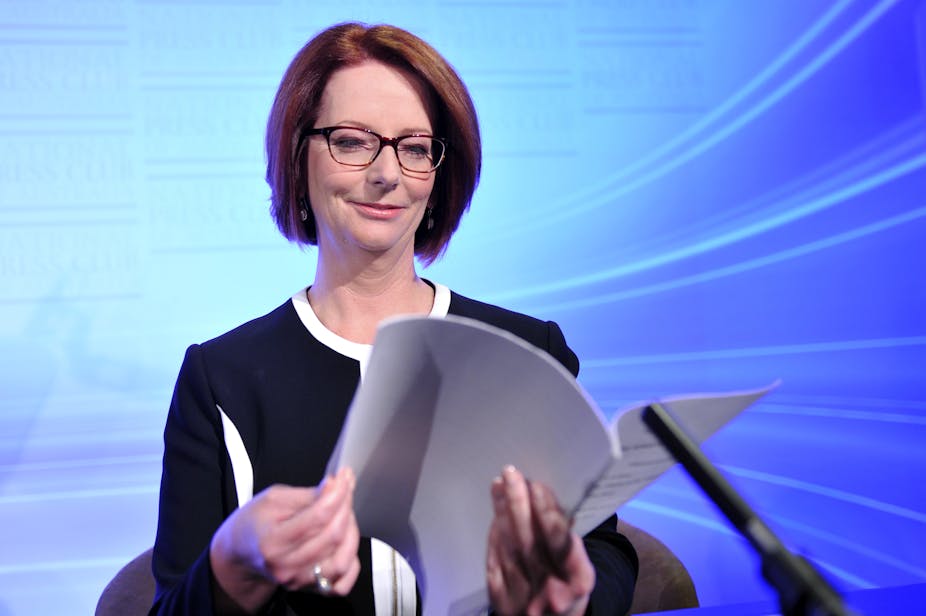Julia Gillard is an Australian political pioneer in many ways. She was the first female prime minister, she led the first minority government in the post-war period and recently moved to appoint the first female senator from an indigenous Australian background.
Now, the prime minister has taken another innovative step by announcing the date of the federal election - September 14 - some seven and a half months before it is to be held.
This is an unusual step for a prime minister to take. In Australia, federal election dates are not fixed and, as the old adage goes, timing is everything. Traditionally, governments hold out on announcing the election date until the last possible point in time. This is so they can select the time that will best serve their political interests while also keeping the opposition in the dark.
While there is no fixed term, the federal parliament cannot run for more than three years after the day it first meets. And while governments are free to call an election earlier if they believe they stand to benefit, a minimum campaign period of 33 days must precede the day of election.
In 1998, for example, John Howard announced an early election, fearing that going later could jeopardise his chances of holding onto power. While the Howard government lost the two-party preferred vote in 1998, it did win enough seats to hold a majority in the House of Representatives. In 2004 and 2007, Howard’s strategy was to hold an election off until much later to attenuate the vigour of the opposition’s campaign. As history demonstrates, this yielded benefits in the former election, but could not stop the inevitable loss in the latter.
Even earlier than that, governments in the 1980s called Australians to the polls in 1980, 1983, 1984 and 1987 as they sought to use the flexibility of selecting election dates to their advantage. The 1984 election, called by Bob Hawke, had an unusually long ten-week campaign which some Labor strategists believed weakened the party’s standing.
The decision can be interpreted in different ways. Constitutional requirements mean that the 2013 election could only be held within a narrow window: from 3 August to 30 November.
Announcing the date so early prevents the inevitable speculation that would follow the prime minister in an election year. This would not only become a nuisance for the government, but also drown out any policy achievements it sought to champion throughout the year.
It also provides for a degree of certainty and transparency. It allows government agencies and business to function with the knowledge of when an election will be held.
The announcement also puts the opposition under the spotlight. The government has painted opposition leader Abbott as a loose cannon and it will hope that he falters, or issues a fatal gaffe, as election day nears. It may also ignite debates within the Coalition about whether they still believe that Abbott will return them to government. While still unpopular in opinion polls, Abbott has put the Coalition in an election-winning position which should mean that he avoids any challenges to his leadership.
It is often the case that in an election year opinion polls also become tight as voters start to think more seriously about who they want in government for the next three years, rather than respond to the political debate at a particular point in time.
The opinion polls from this year paint a slightly better picture for the government, but it still trails the opposition. It is often the case that governments can withstand an electoral backlash and return to government with a reduced majority. But the minority situation Labor finds itself in means that it actually has to win seats to survive. Based on current opinion polls, this seems unlikely.
The government has now set its own timeline to persuade voters it should be returned. If it succeeds, Gillard’s innovative spirit will be hailed.
If it fails, it’s unlikely that future governments will follow in her footsteps.

